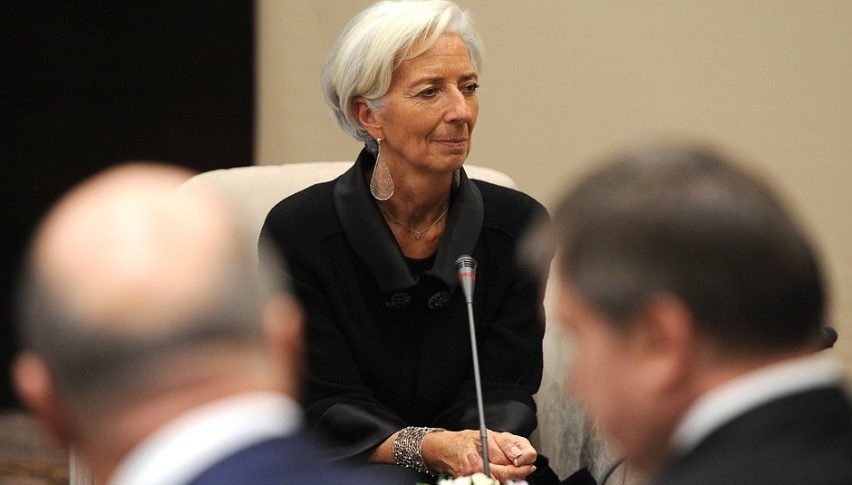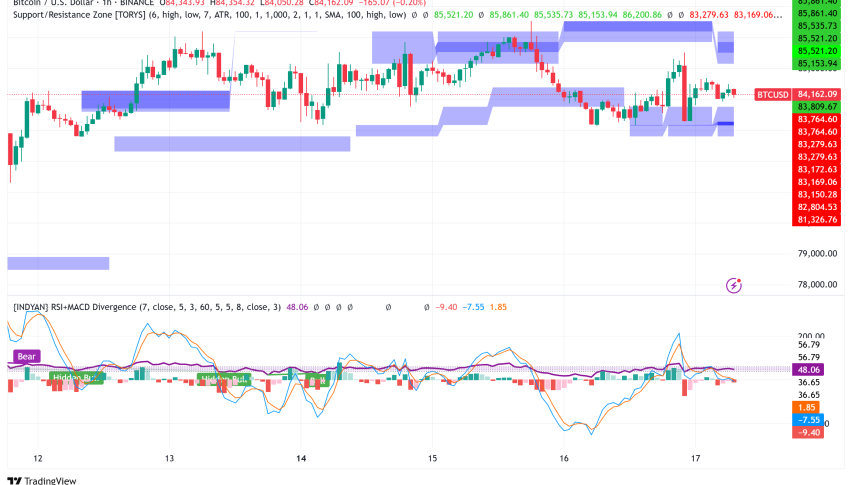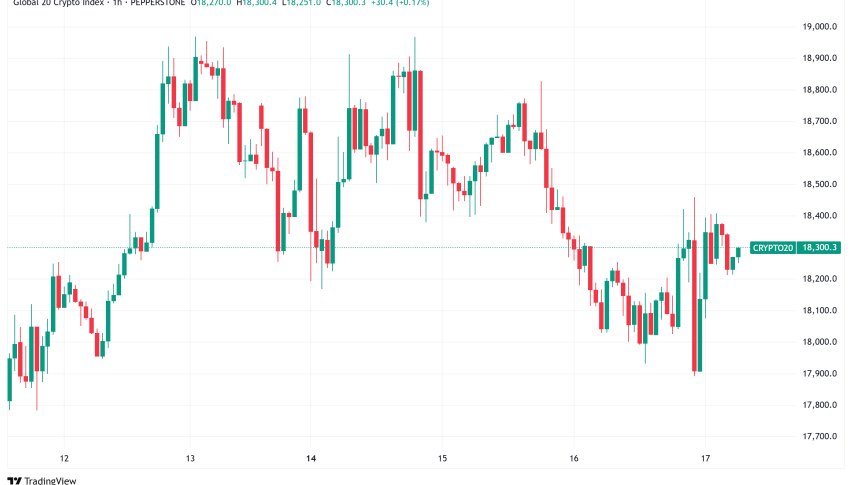Bitcoin (BTC) – Forecast Summary
| Bitcoin Forecast: 2023 Price: $24,000 – $85,000 Price drivers: itcoin economic calendar, Market sentiment, Crypto crackdown, China, Post COVID-19, failing traditional banks, hawkish central banks | Bitcoin Forecast: 1 Year Price: $120,000 – $150,000 Price drivers: Crypto crackdown, Crypto adoption, Bitcoin economic calendar, Safe haven status, Global economy | Bitcoin Forecast: 3 Years Price: $200,000 – $300,000 Price drivers: Positive risk sentiment, Crypto legalization, Bitcoin economic calendar, Bitcoin developments, Hawkish central banks |
Bitcoin came out quietly a decade ago when it was introduced, but now the crypto market is taking the world by storm, as cryptocurrencies are being adopted into normal life pretty well. Bitcoin is starting to be acknowledged as a national currency in some countries, with El Salvador being the first state to adopt it in September 2021. Other countries in Latin America, such as Panama, Venezuela, Paraguay, etc., are also considering adopting Bitcoin as a legal tender. BTC has been making decent upward progress as a result, climbing above the all-time high of $65,000 in October 2021. So, the sentiment has turned positive, and Bitcoin is leading the market once again.
2021 was an extraordinary year for cryptocurrencies, and particularly for Bitcoin. We saw an incredible surge in Decentralized Finance (DeFi), cryptocurrency prices and adoption. Bitcoin had already started a strong bullish trend towards the end of 2020, and in the first few months of 2021, it surged to $65,000, which was the highest level for many months, until October’s Bitcoin signals showed the bulls resuming the scene. In 2022, some more big names also entered the market, with Elon Musk and Tesla deciding to accept Bitcoin as payment; they dropped this decision before the China crackdown started, only to reverse course a while later, deciding to accept Bitcoin after all. SBF and the collapse of FTX around end of 2022 caused a huge slide in crypto market, and fast forward into 2023, the market has already begun recovering with BTC breaking past a 9-month high.
The crackdown in China, started the rout in Bitcoin in May; it sent BTC/USD below 30,000, where it formed a support zone. That support area has now turned into a new bottom for Bitcoin after the price turned bullish at that area again in July. The crypto crackdown escalated again in September, with Western countries banning some crypto exchanges and issuing warnings on cryptocurrencies, but in the end, Bitcoin and the crypto market survived, even progressing higher by the end of 2021, so 2022 is expected to be another bullish year for cryptocurrencies, as adoption increases.
Recent Changes in the Bitcoin Price
| Period | Change ($) | Change % |
| 3 Months | +29,175 | +93.5% |
| 6 Months | -2,324 | -3.7% |
| 1 Year | +49,650 | +463% |
| 3 Years | +40,237 | +385% |
| 5 Years | +45,665 | +424% |
BTC Live Chart
Bitcoin Price Prediction for the Next 5 Years
The momentum in Bitcoin, in Bitcoin news and events, as well as the crypto market in general, turned quite bullish at the end of 2021, which was supported by both the technicals and the fundamentals. We will also take a more in-depth look at the technical side below. Bitcoin broke below the previous high of $65.000 in October, which opened the door for further gains. Fundamentally, the crackdown on cryptocurrencies hasn’t left many scars, and the crypto market has bounced back even stronger, while crypto adoption, and Bitcoin adoption in particular, have turned the sentiment quite positive, so further gains are expected, with Bitcoin eyeing the major target at $100,000 now, as it becomes a mainstream method of payment.
Bitcoin price prediction: The Crackdown on Cryptos has Failed
We all knew that, from the start, the traditional financial market did not have a positive attitude towards the crypto market, since this new financial sector challenges the fiat currency and banking market. They have been tackling cryptocurrencies for some time, but in 2021 they floored the gas pedal in the war against cryptos.
But while regulation might be good for cryptocurrencies, as it would pave the way for them to enter the mainstream financial market, this looks more like a war, especially in China. China banned all Bitcoin mining in May, and extended the ban to include all firms that deal with crypto mining, claiming, as the reason, that it consumes too much electricity, even though the Proof-of-Work (PoW), which is more energy consuming, is losing favor, and the Power-of-Stake (PoS), which is more economical in terms of energy, is taking over. But the crackdowns were what got the ball rolling in the massive crypto crash, which lasted from May until July.
Then, in September, China escalated the crackdown, banning all cryptocurrencies and crypto-related businesses. The Binance crypto exchange was also banned in different countries, while the EU and most major central banks issued warnings against cryptocurrencies. But, other decentralized crypto exchanges benefited from this, and the investors fleeing China set up shop in other countries. So, the big crypto crackdown proved to be nothing more than a lot of noise. Now, major banks are entering the crypto space, and different countries are planning to launch their own cryptocurrencies. Digital payments systems and the world of decentralized finance are forcing the financial system to evolve and become part of this new technology, as banks try to regain control within the system.
FXLeaders Bitcoin Price Prediction: Bitcoin Becoming Legal Tender Too?
In 2021, El Salvador made headlines when it adopted Bitcoin as a national currency. Cryptocurrencies entered the financial markets slowly a decade ago, but they have been making their way through the world of the traditional economy, as a separate sector, at an incredible pace in recent years. The total amount of the crypto market capitalization exceeds $3 trillion once again, as the interest in adopting crypto, and Bitcoin, in particular, grows.
Bitcoin is challenging fiat currencies now after El Salvador became the first country to adopt Bitcoin in September 2021. Being legal tender doesn’t mean that all retailers are forced to accept it. It is only obligatory for debt purposes. But the lawmakers in El Salvador have passed a law stating that “every economic agent must accept Bitcoin as payment when it is offered by anyone acquiring goods or services.” They also introduced the national digital wallet, known as “Chivo” and a $30 bonus for whoever applies for a wallet.
Other countries in Latin America, such as Venezuela, Paraguay, Panama and Mexico, are also planning to adopt Bitcoin, as are other places in the world, like Ukraine and Malta – all of this will only increase the demand for Bitcoin. Panama has passed a draft cryptocurrency law that seeks to increase the use of cryptocurrencies as a payment option, and the use of blockchain technology in the financial industry. The Parliament of Ukraine has voted to legalize and regulate cryptocurrencies. It is also making political headlines in the US and China, as well as entering the stock and futures market, which is pushing it further into the mainstream.
Bitcoin is Still Leading the Crypto Market Sentiment
Without a doubt, Bitcoin is the leader in the cryptocurrency market. The market gets excited when Bitcoin breaks an important level. Such was the case when it broke the 20,000 level in December 2020, and again when it broke above $65,000 in October 2021. The market also reversed higher, following BTC/USD, as it bounced off the $30,000 support in July 2021. So, the market sentiment is still following Bitcoin, but it has lost some of its appeal in the crypto market, which is normal, as the market is getting larger by the day, with many new cryptocurrencies entering the scene, and the Decentralized Finance (DeFi) industry growing exponentially. As shown on the chart below, Bitcoin’s market dominance stood at above 73% in early January 2021, but it has declined continuously, to above 40% currently, where it seems to have formed a range between 40% and 50%, despite the growing market cap, which stands above $1 trillion. But Ethereum has won terrain in terms of indicating the crypto market average, since Bitcoin has become too volatile.
The sentiment in itself has been bullish overall for Bitcoin, and for the rest of the crypto market during 2021. It was affected by the global crackdown on cryptos, after cryptocurrencies crashed in May 2021, when China openly began a vendetta against cryptocurrencies, and again in September, when the crackdown escalated in China and elsewhere in the world. But, as we know, cryptocurrencies brushed it all off and ended up making new highs later in 2021. This shows that the sentiment is extremely positive for cryptos, which has been the major factor that has propelled the market higher. The sentiment is expected to remain positive in 2022, as cryptocurrencies become more mainstream, and adoption increases.
Has Bitcoin Become the Ultimate Safe Haven?
The cryptocurrency market is turning into the biggest sector in the financial industry, as it heads toward $3 trillion. It benefited immensely amid the uncertainty in 2020 and 2021, as the global economy fell into recession due to coronavirus restrictions. This means that trillions of dollars have flowed into cryptocurrencies during the last two years, while the political, social and economic uncertainties have been high. It also means that cryptocurrencies, and Bitcoin in particular, have turned into some form of safe haven, which increases during times of political instability, although it has also increased with the expansion of the global economy.
So the safe haven status of cryptocurrencies so far has been linked to politics. The volatility has become quite high for a safe haven, but this is not a traditional market and we are not in normal times. So the status of Bitcoin seems to have shifted. Digital currencies were considered a market with high risk, where traders would invest during times of positive risk sentiment, considering the high volatility and large spreads. Now, traders are turning to cryptocurrencies at times when the uncertainty is high, which makes them safe-havens. The adoption of BTC as legal tender in El Salvador and possibly in other countries will help further establish Bitcoin as a safe haven asset. Although this status is yet to be confirmed, so we will follow the price action of cryptocurrencies in general, and Bitcoin in particular.
Possible Downsides to the Bitcoin Uptrend
Cryptocurrencies had a great run in 2021, taking all the attention in the financial markets. This saw the total value of the crypto market increase from around $500 billion in December 2020, to almost $3 trillion towards the end of 2021. But, we have seen some major pullbacks in the market, and in Bitcoin too, which has led to this cryptocurrency losing its status as the average indicator for the crypto market. So, this market remains very risky, and there are very imminent risks as we head into 2022. One of the main risks for Bitcoin is the crackdown on cryptocurrencies. Bitcoin has been all but banned in China, and they don’t seem willing to relent in the war on cryptos. Besides this, other financial institutions, such as central banks, the IMF etc., have been issuing warnings against buying cryptocurrencies, which is another negative factor for the overall sentiment in the crypto market. On the other hand, cryptocurrencies are being adopted massively, and central banks are accepting this fact, which is a good thing, but taxing them will have a negative impact for cryptos, particularly Bitcoin. High inflation has been another reason why large amounts of funds have been transferred into cryptocurrencies. While traditional fiat currencies keep depreciating, cryptocurrencies keep increasing in value, attracting investors every step of the way. But, if central banks decide to tighten the monetary policy fast, we might see a reversal of such flows, although it will have a limited impact on Bitcoin.
The mining difficulty has increased together with the surge in the price
Another factor that might weigh on Bitcoin’s bullish momentum in the months ahead is the difficulty involved in mining. As Bitcoin has become more expensive, the mining revenue has increased, having tripled since August. But, this has attracted many more miners to the game, especially large-scale institutional ones, such as mining firms like Riot Blockchain (RIOT) and Marathon Patent Group (MARA), which placed similar pre-orders for 31,000 and 90,000 machines respectively in 2020. Manufacturers of mining machines are not able to keep up with the demand, which has contributed to increased difficulty in mining. The chart above shows that, as Bitcoin headed for $ 40,000, the difficulty rose to above 20 trillion, and it will continue to rise, which will be a burden for Bitcoin in terms of keeping up the pace of the increase in the long run. Nonetheless, the Bitcoin price prediction for the coming quarters remains bullish.
Aave (AAVE) 2022-2024 Price Prediction: Rising Popularity of DeFi Driving the Bullish Trend
Ethereum (ETH) Price Prediction For 2022: The $5,000 Level is the Next Target
Bitcoin Technical Analysis – The Bullish Trend Resumes for BTC/USD
Dojis have been great trade signals for Bitcoin
From the monthly Bitcoin chart, we can see that the price traded in a very tight range for several years, until early 2017. That shows that the focus on digital currencies was low until the end of 2017, when cryptos suddenly started to surge. The 50 SMA (yellow) in particular was providing support, but it lost touch with the price in 2017, falling behind as the surge started, and it still hasn’t caught up in terms of price. The high of $20,000 from back then, was then broken in December 2020, as the second surge in the crypto market began, and now it seems very far behind. Bitcoin made a new high at $65,000 in April 2021, but it formed a doji signal candlestick up there, which signaled a sell trade, since it indicates a reversal after the bullish move of the previous months. The crash came in May, when China went public with their war on cryptocurrencies, particularly on Bitcoin mining, and Bitcoin fell below $30,000. However, a support level was formed around that zone, and Bitcoin reversed higher. The upside momentum was slow at first, following the reversal, but after the market became convinced that the crackdown wasn’t going to kill cryptocurrencies, the momentum picked up pace in October, and the April high of $65,000 was broken. Bitcoin continues to make new highs, so it seems that the $100,000 level is not too far away.
The 50 SMA is providing support for Bitcoin now
In the weekly chart above, we see that Bitcoin left the moving averages behind in November 2020, as the crypto surge began. The surge was pretty straightforward until April, when it formed a top at $65,000. It traded sideways for about a month, but crashed lower in May, although the support zone around $30,000 held the decline, and after the 50 SMA caught up with the price, Bitcoin reversed higher. In September we saw another retrace lower, as the crackdown on cryptos accelerated, but the 50 SMA held as support once again, and the surge resumed, with the leading crypto printing new highs.
Bitcoin Price Prediction: The 100 SMA is supporting Bitcoin after the $10,000 crash
On the daily chart, smaller moving averages, such as the 50 SMA (yellow), turned into support, as the momentum was really bullish during the first few months of this year. Then they were broken without much resistance when the price crashed in May, with Bitcoin trading in a range between $30,000 and $40,000 for a few months, before the bullish trend resumed again and Litecoin made new record highs above $65,000.




